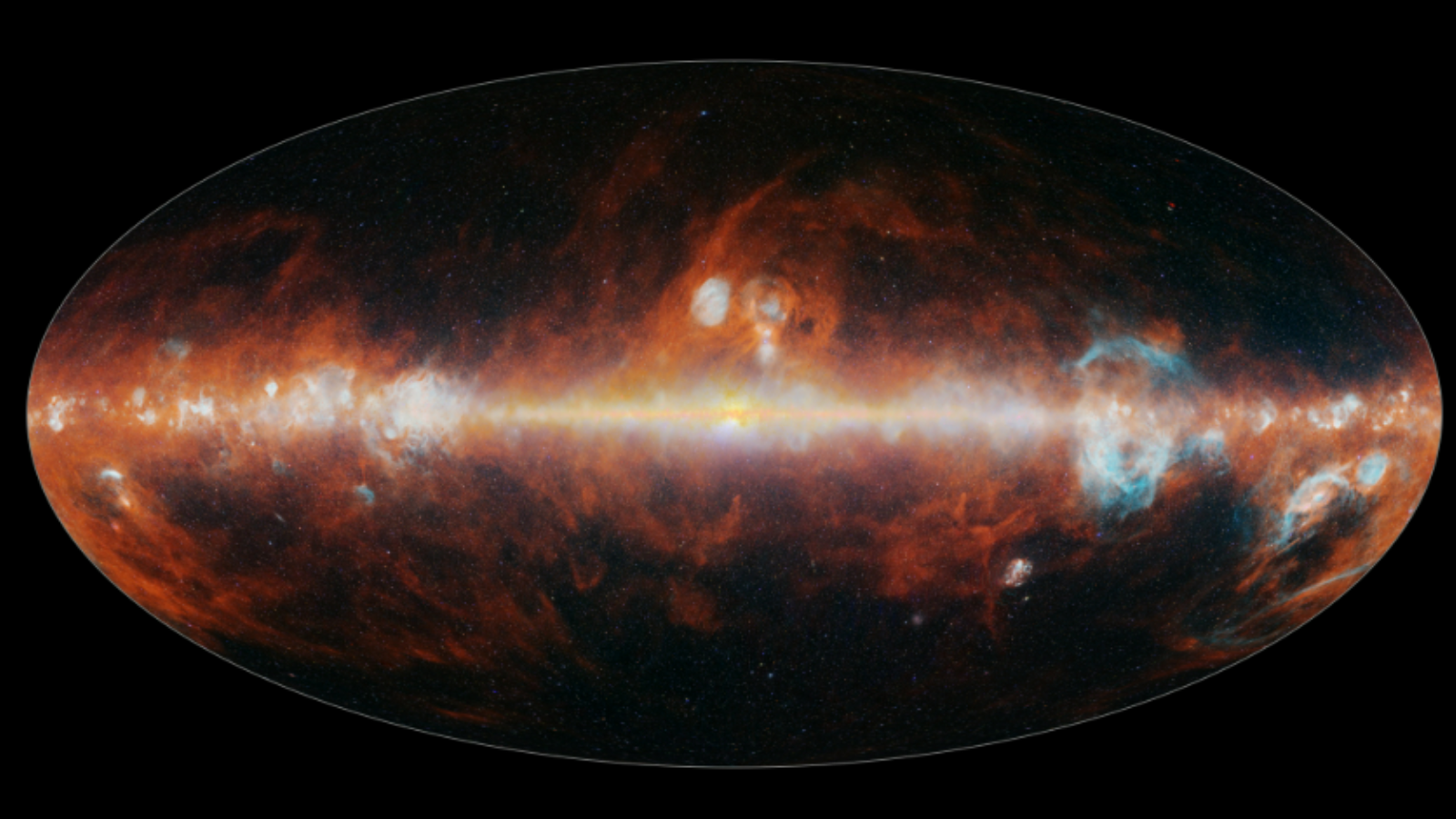NASA's Juno spacecraft sheds new light on 25-year Jupiter 'hot spot' mystery
A generation after a NASA spacecraft's probe found an unexpectedly hot and dense atmosphere at Jupiter, a newer agency mission may have some answers to the puzzle.
NASA's Juno spacecraft discovered that these "hot spots" on the gas giant planet — which the Galileo spacecraft discovered in 1995 — are wider and deeper than previous models and observations suggest, according to results revealed Dec. 11 at the American Geophysical Union's annual fall conference, held virtually this year due to the coronavirus pandemic.
Juno, which has been orbiting Jupiter since 2016, makes periodic close-up swoops by Jupiter called "perijoves" to learn more about the planet's atmosphere, in a bid to better figure out the formation history of big gas giant worlds. Juno is now on its 29th pass of the planet, dipping in and out of the intense radiation environment to send data back to Earth.
Related: Fly over Jupiter in this stunning video from NASA's Juno spacecraft
Insights about Jupiter help us understand not only the giant gas planets in our solar system, but also large exoplanets beyond the solar system — of which we know of thousands.
"Giant planets have deep atmospheres without a solid or liquid base like Earth. To better understand what is happening deep into one of these worlds, you need to look below the cloud layer," Scott Bolton, principal investigator of Juno at the Southwest Research Institute in Texas, said in a NASA statement.
The mystery results came from NASA's Galileo mission, after it hurled an atmospheric probe into Jupiter's atmosphere on Dec. 7, 1995. The probe spent about an hour transmitting data before it was crushed. (Galileo itself persisted until 2003, when scientists deliberately hurled the spacecraft into Jupiter to avoid possible contamination of potentially habitable icy moons.)
Breaking space news, the latest updates on rocket launches, skywatching events and more!
Galileo's probe reported a dry and windy environment within Jupiter's atmosphere. At first, scientists thought the probe hit an unexpected "desert" within a more generally moist northern equatorial region. More recent results from Juno, however, show that the entire equatorial belt is dry.
"The implication is that the hot spots may not be isolated 'deserts,' but rather, windows into a vast region in Jupiter's atmosphere that may be hotter and drier than other areas," NASA said in the same statement. "Juno's high-resolution data show that these Jovian hot spots are associated with breaks in the planet's cloud deck, providing a glimpse into Jupiter's deep atmosphere. "
Related: Scientists get their best-ever look at Jupiter's atmosphere and storms
The new findings also may explain recent studies of "shallow lightning" Juno observed on Jupiter, which are high-altitude electrical discharges that happen when ammonia mixes with water.
"High up in the atmosphere, where shallow lightning is seen, water and ammonia are combined and become invisible to Juno's microwave instrument. This is where a special kind of hailstone that we call 'mushballs' are forming," Tristan Guillot, Juno co-investigator at the University of Côte d'Azur in France, said in the same statement.
"These mushballs get heavy and fall deep into the atmosphere, creating a large region that is depleted of both ammonia and water. Once the mushballs melt and evaporate, the ammonia and water change back to a gaseous state and are visible to Juno again."
It appears there is still much to understand about Jupiter's atmosphere, as Juno also produced puzzles as it followed up on observations of six cyclones at the planet's south pole that it performed last year. One storm disappeared while changing from a pentagon to a hexagon shape, and the other five remain. Scientists are still trying to figure out how the vortices form and why some are more stable while others appear to die quickly, the team said in its update.
The research was released during a virtual media briefing Dec. 11 at the American Geophysical Union's fall conference.
Follow Elizabeth Howell on Twitter @howellspace. Follow us on Twitter @Spacedotcom and on Facebook.

Elizabeth Howell (she/her), Ph.D., was a staff writer in the spaceflight channel between 2022 and 2024 specializing in Canadian space news. She was contributing writer for Space.com for 10 years from 2012 to 2024. Elizabeth's reporting includes multiple exclusives with the White House, leading world coverage about a lost-and-found space tomato on the International Space Station, witnessing five human spaceflight launches on two continents, flying parabolic, working inside a spacesuit, and participating in a simulated Mars mission. Her latest book, "Why Am I Taller?" (ECW Press, 2022) is co-written with astronaut Dave Williams.

